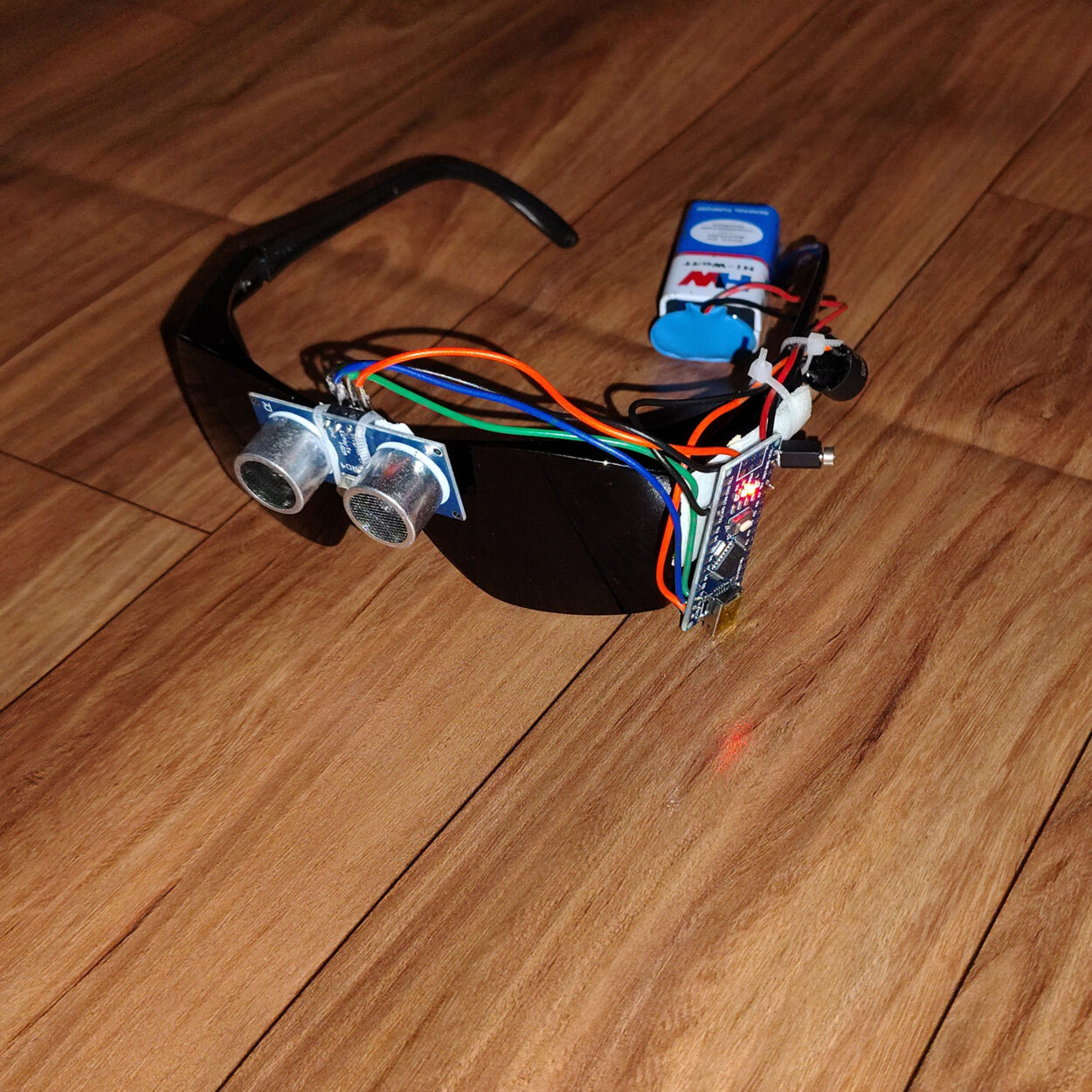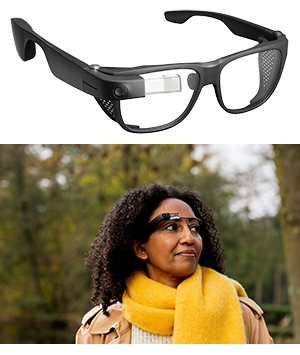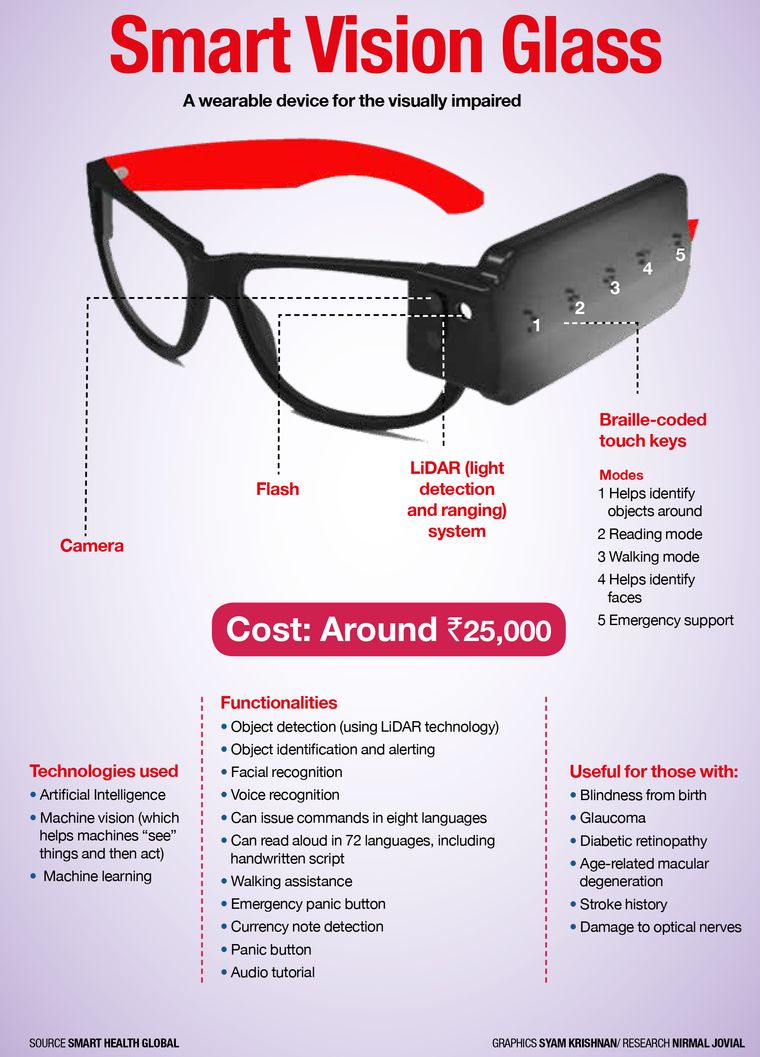Speech-to-Text Devices for Low Vision Users: Enhancing Communication and Productivity
Empowering Freedom With Assistive Modern Technology for the Blind
The combination of assistive technology for people who are blind or aesthetically damaged represents a considerable innovation in cultivating self-reliance and boosting top quality of life. With a series of tools-- from screen viewers to cutting-edge tactile devices-- these technologies not only promote navigating and interaction but likewise promote social inclusion and engagement in different facets of life. As we explore the varied types of assistive devices and their real-world applications, it becomes clear that the effect is extensive. The advancement of this innovation raises crucial concerns regarding access and future growths that necessitate further assessment.
Understanding Assistive Modern Technology
Although assistive innovation has advanced significantly for many years, its fundamental purpose continues to be the very same: to boost the lifestyle for people with specials needs, particularly those that are visually impaired or blind. This modern technology includes a wide range of tools and devices that assist in freedom and capability in everyday tasks.
Assistive technology can be classified into high-tech and low-tech options, each created to fulfill particular requirements. Modern tools typically include software applications, specialized equipment, and flexible tools that use innovative technology to offer support in numerous contexts. On the other hand, low-tech solutions may include daily things that are customized to enhance accessibility, such as magnifiers or tactile pens.
The combination of assistive modern technology into the lives of people who are blind or visually harmed not only promotes autonomy however also fosters social incorporation and participation in instructional and specialist environments. By leveraging these modern technologies, individuals can browse their environments, accessibility info, and communicate effectively, therefore improving their overall top quality of life. Comprehending assistive technology is critical for professionals, advocates, and caretakers that intend to support people in optimizing their potential and attaining higher freedom.
Kinds of Assistive Gadgets
Assistive tools for the blind and aesthetically damaged are vital devices that enhance daily obeying addressing certain obstacles experienced by customers. These devices can be broadly categorized right into 3 main types: optical gadgets, digital devices, and sensory devices.

Sensory devices, such as Braille screens and responsive maps, provide alternate means to obtain information. Braille shows transform electronic text into Braille, allowing customers to go through touch. Responsive maps use spatial understanding through increased lines and appearances, enabling for better ecological recognition.
Together, these assistive tools empower people with visual problems to involve even more totally with their environments, advertising greater independence and confidence in day-to-day activities.

Impact on Life
The combination of assistive innovation right into the everyday lives of individuals who are aesthetically damaged or blind significantly enhances their capacity to connect and browse with the globe around them. Instruments such as display visitors, Braille shows, and mobile applications promote accessibility to details, enabling individuals to engage with digital content, communicate efficiently, and manage daily jobs individually.
In addition, technologies like wise glasses and navigating applications give real-time aid in unknown atmospheres, enhancing mobility and self-confidence. These devices allow users to recognize barriers, checked out signs, and also acknowledge faces, thus cultivating a feeling of autonomy in public spaces. In addition, home automation systems, which can be managed with voice commands, permit people to manage their living settings better, improving comfort and safety.
The impact of assistive modern technology expands past functional jobs; it advertises social inclusion and emotional well-being. By bridging the void in between individuals and their environments, these technologies empower customers to participate totally in community tasks, go after instructional possibilities, and participate in purposeful relationships. Inevitably, the improvement of assistive technology is critical in redefining the opportunities for individuals that are visually damaged or why not look here blind, leading to a much more accessible and comprehensive society.
Success Stories and Testimonies

An additional effective testimonial originates from Mark, a current university grad that utilized display analysis software throughout his academic journey. This technology enabled him to access program materials and get involved in conversations, inevitably bring about his effective transition right into the labor force. Mark credits assistive technology for empowering him to achieve his career objectives, stressing its duty in leveling the playing field for individuals with aesthetic problems.
Furthermore, recreation center have reported increased engagement in their programs many thanks to the introduction of easily accessible electronic systems. These platforms have made it much easier for people to connect, share sources, and assistance one an additional. These success stories collectively emphasize the extensive effect of assistive technology in cultivating freedom, improving lifestyle, and breaking down obstacles for the blind and aesthetically damaged area.
Future Fads in Assistive Technology
Arising innovations are positioned to change the landscape of assistive technology for individuals who are visually impaired or blind. Technologies in synthetic intelligence (AI) and artificial intelligence are improving the capabilities of gadgets, allowing even more instinctive customer experiences. AI-driven applications are increasingly able to acknowledge items and check out message out loud in real-time, providing individuals with beneficial information regarding their environments.
In addition, developments in wearable innovation are producing new chances for self-reliance. Smart glasses furnished with increased fact attributes can overlay vital details onto the customer's line of vision, helping with navigation and interaction with the atmosphere. Moreover, the combination of Net of Things (IoT) devices is improving access in wise homes, enabling individuals to manage devices and obtain alerts with voice commands or tactile user interfaces.
The development of braille display screens and responsive feedback systems is also rising, promoting accessibility to electronic material and boosting interaction. As these modern technologies you can try here remain to advance, they assure to improve everyday living, academic opportunities, and work prospects for people with visual disabilities. Continual partnership in between engineers, customers, and campaigning for groups will certainly be necessary in making sure these innovations satisfy the needs of the neighborhood effectively.
Final Thought
In conclusion, assistive modern technology plays a critical duty in enhancing the self-reliance of individuals that are aesthetically impaired or blind. By supplying important devices and sources, these innovations promote improved accessibility, communication, and navigation to information, consequently fostering autonomy and self-confidence. The transformative impact of assistive gadgets not just promotes efficient communication with the environment however additionally motivates social incorporation and participation in different facets of life, eventually encouraging users to grow within their communities.
The assimilation of assistive innovation for individuals that are blind or visually impaired stands for a significant innovation in fostering independence and enhancing high quality of life.The combination of assistive innovation into the lives of individuals who are blind or aesthetically hindered not just advertises freedom however likewise promotes social inclusion and engagement in instructional and specialist environments. Eventually, the development find this of assistive technology is important in redefining the possibilities for people that are blind or aesthetically damaged, leading to an extra obtainable and inclusive culture.
Several individuals that are aesthetically impaired or blind have shared motivating success stories that highlight the transformative influence of assistive innovation on their lives.In verdict, assistive modern technology plays a critical duty in enhancing the independence of people that are visually damaged or blind.